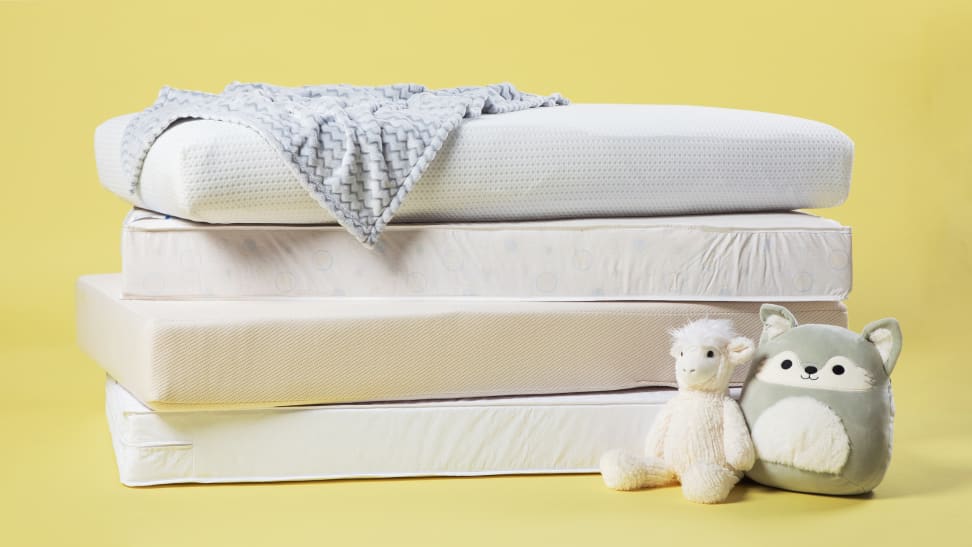The Comprehensive Guide to Baby Mattress
Newborns spend around 14 to 17 hours a day sleeping, which makes the sleeping environment critical to their health. The right baby mattress supports healthy spine development, reduces the risk of suffocation, and contributes to better sleep quality for both babies and caregivers.
Why Baby Mattresses Matter Today
The importance of choosing a quality baby mattress goes beyond simple comfort. Here’s why:
-
Safety Concerns: Infant sleep safety is directly tied to the risk of Sudden Infant Death Syndrome (SIDS), which is influenced by factors like sleep position and mattress firmness.
-
Spinal Development: Infants require a flat and firm surface to ensure proper alignment of their bones and muscles.
-
Hygiene and Allergy Prevention: A breathable, hypoallergenic mattress reduces exposure to allergens, bacteria, and moisture that can trigger infections.
-
Long-Term Health: Sleep affects memory, brain development, and emotional regulation. A supportive sleep surface helps nurture healthy patterns from birth.
Who Is Affected?
-
Parents and Caregivers: Tasked with ensuring a safe environment for infants.
-
Healthcare Providers: Pediatricians often advise parents on appropriate sleep surfaces.
-
Manufacturers and Retailers: Must comply with safety regulations and material standards.
Trends and Developments in Baby Mattresses (2024–2025)
Over the past year, the baby mattress market has experienced innovation across materials, safety features, and sustainability. Noteworthy trends include:
1. Organic and Non-Toxic Materials
With growing awareness about chemical exposure, more parents are choosing mattresses made of:
-
Organic cotton
-
Natural latex
-
Plant-based foam
These materials are free of harmful chemicals like VOCs (volatile organic compounds), phthalates, and flame retardants.
2. Dual-Firmness Designs
Mattresses now often come with a dual-sided design:
-
One firm side for infants (0–12 months)
-
One softer side for toddlers (1–3 years)
This feature extends usability and supports developmental stages.
3. Breathability and Cooling Tech
Mesh-covered or ventilated mattresses are trending in 2025. Breathable cores and fabrics help regulate temperature and reduce suffocation risk.
4. Eco-Friendly Manufacturing
Sustainable production processes and recyclable components are being favored by eco-conscious parents and aligned with global sustainability goals.
Laws, Standards, and Policies Related to Baby Mattresses
Governments and health organizations around the world have set safety guidelines and standards to protect infants. Here’s an overview of relevant regulations:
| Country/Region | Standard/Regulation | Focus |
|---|---|---|
| United States | CPSC 16 CFR Part 1633 & 1632 | Flammability, firmness, size compatibility |
| European Union | EN 16890:2017+A1:2021 | Chemical safety, structural integrity, firmness |
| Australia/New Zealand | AS/NZS 8811.1:2013 | Infant mattress firmness test |
| Canada | SOR/2016-152 | Hazardous substances and structural design |
-
Mattress firmness is mandatory to minimize SIDS risks.
-
Toxic material bans include lead, BPA, and formaldehyde.
-
Proper sizing ensures that there are no gaps between mattress and crib edges.
Helpful Tools and Resources
Parents can use a variety of online tools and guides when selecting or maintaining a baby mattress:
1. Safety Checklists
-
AAP Safe Sleep Guidelines: Provided by the American Academy of Pediatrics
-
Baby Sleep Positioning Guides: Help position babies correctly on the mattress
2. Mattress Firmness Test Tools
-
Foam compression tests and pressure sensors (used by professionals or baby gear reviewers)
3. Mobile Apps
-
The Wonder Weeks App: Track baby sleep and development patterns
-
Huckleberry Sleep App: Logs sleep and gives insights based on safe sleep practices
4. Material Certifications
Look for these labels:
-
GREENGUARD Gold Certified
-
GOTS (Global Organic Textile Standard)
-
CertiPUR-US® Certified Foam
5. Online Comparison Platforms
-
BabyGearLab, WhatToExpect, and Healthline Parenthood offer expert and user reviews of baby mattresses.
Frequently Asked Questions (FAQs)
1. How firm should a baby mattress be?
A baby mattress must be very firm. It should not conform to the baby’s head or body. If it’s too soft, it increases the risk of suffocation and improper posture.
2. Can I use a secondhand baby mattress?
Using a secondhand mattress is not recommended unless it’s in excellent condition with no mold, indentations, or tears. Studies have shown that used mattresses may increase the risk of SIDS if not hygienically maintained.
3. What size mattress fits a standard crib?
In most countries, the standard crib mattress size is about 52 x 28 inches (132 x 71 cm). Always check that there is no more than a two-finger gap between the mattress and crib frame.
4. Are waterproof covers safe for baby mattresses?
Yes, as long as they are breathable and free of harmful chemicals. Waterproofing protects against spills and moisture, which helps prevent mold and allergens.
5. How often should I replace a baby mattress?
Typically, a baby mattress lasts through infancy (up to 12–18 months), or slightly longer if dual-sided. Replace it if you notice sagging, damaged fabric, or odor.
Conclusion
A baby mattress is not just another nursery item — it’s a crucial component of infant health and safety. With the growing range of options available today, parents need to balance safety features, certified materials, durability, and comfort. Staying updated with recent trends and complying with safety regulations ensures peace of mind and a healthier start for the baby.
Whether you’re a first-time parent, a caregiver, or even a policymaker, understanding the essentials of baby mattresses helps you make informed, responsible choices that contribute to a safer sleep environment.

